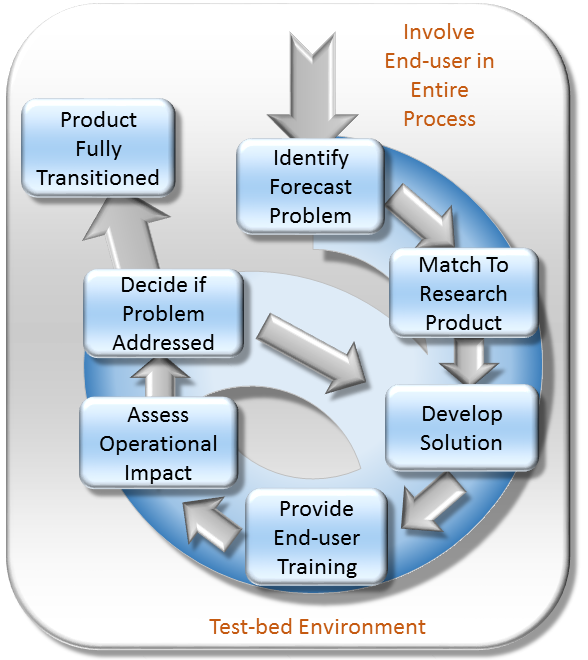Satellites Track 15 January Dust Storm's Movement from Colorado to Texas
On the morning of 15 January 2021, a large dust storm formed in eastern Colorado. After several traffic accidents in the morning caused by extremely low visibility, Colorado state authorities shut down several roads including Interstate 70. At 1:15 PM local time, the Boulder NWS office issued a dust storm warning for the surrounding counties. As the dust storm moved southeastward during the afternoon, additional dust storm warnings were issued across the Texas Panhandle. The storm continued to move across Texas overnight, leading to hazy skies throughout central to southeastern portions of the state by the next morning.
The GOES-16 Dust Red-Green-Blue (RBG) product tracked the dust storm throughout its journey from Colorado to southeastern Texas and over the Gulf of Mexico. In Figure 1, the dust storm initially appears bright magenta near its source region in Colorado, and turns less intense in color as it becomes optically thinner moving across Texas overnight. As the storm travels across Texas, it appears less intense in color due a decrease in the dust concentration and lower surface temperatures overnight. Figure 2 displays AirNow’s Air Quality Index (AQI) map for 7:00 AM central time on 16 January, revealing unhealthy air quality conditions from Waco to Killeen the morning following the Colorado storm. Less significant reductions in air quality extend across southeast Texas, including Houston, as the dust moved towards the Gulf of Mexico.

Fig. 1: GOES-16 Dust RGB animation, valid between 1500 UTC 15 January and 1400 UTC 16 January. The dust storm is the magenta streak that forms in Colorado and moves southeastward.

Fig. 2: AirNow Air Quality Index (AQI) map for 1300 UTC 16 January. The red and orange indicate unhealthy air quality, while yellow indicates moderate air quality.
NOAA’s Hybrid Single-Particle Lagrangian Integrated Trajectory (HYSPLIT) model accurately simulated the storm’s southeastward trajectory from Colorado to Texas. The HYSPLIT model computes the trajectories and dispersion of air pollutants such as dust and chemical species, allowing forecasters and scientists to understand the behavior of air pollution and provide advisories and warnings for impending pollution episodes. Driven by the Global Forecast System model, the HYSPLIT model projected the storm’s movement from Colorado into southeastern Texas, accurately predicting that high dust concentrations would arrive in central Texas in the vicinity of observed high dust concentrations over Killeen and Waco (Figs. 2 and 3). HYSPLIT also projected the plume arrival time at about 12 hours after the initial release at 1500 UTC in eastern Colorado (Fig. 4). These combined remote sensing and modeling products are valuable tools for monitoring and predicting dust episodes such as the event highlighted herein.

Fig. 3: NOAA HYSPLIT model output initialized with six dust release points in eastern Colorado at 1500 UTC 15 January, showing forecast low-level dust concentration over the course of 24 hours.

Fig. 4: NOAA HYSPLIT model output initialized with six dust release points in eastern Colorado at 1500 UTC 15 January, showing the forecast plume arrival as the dust storm travelled southeastward.

